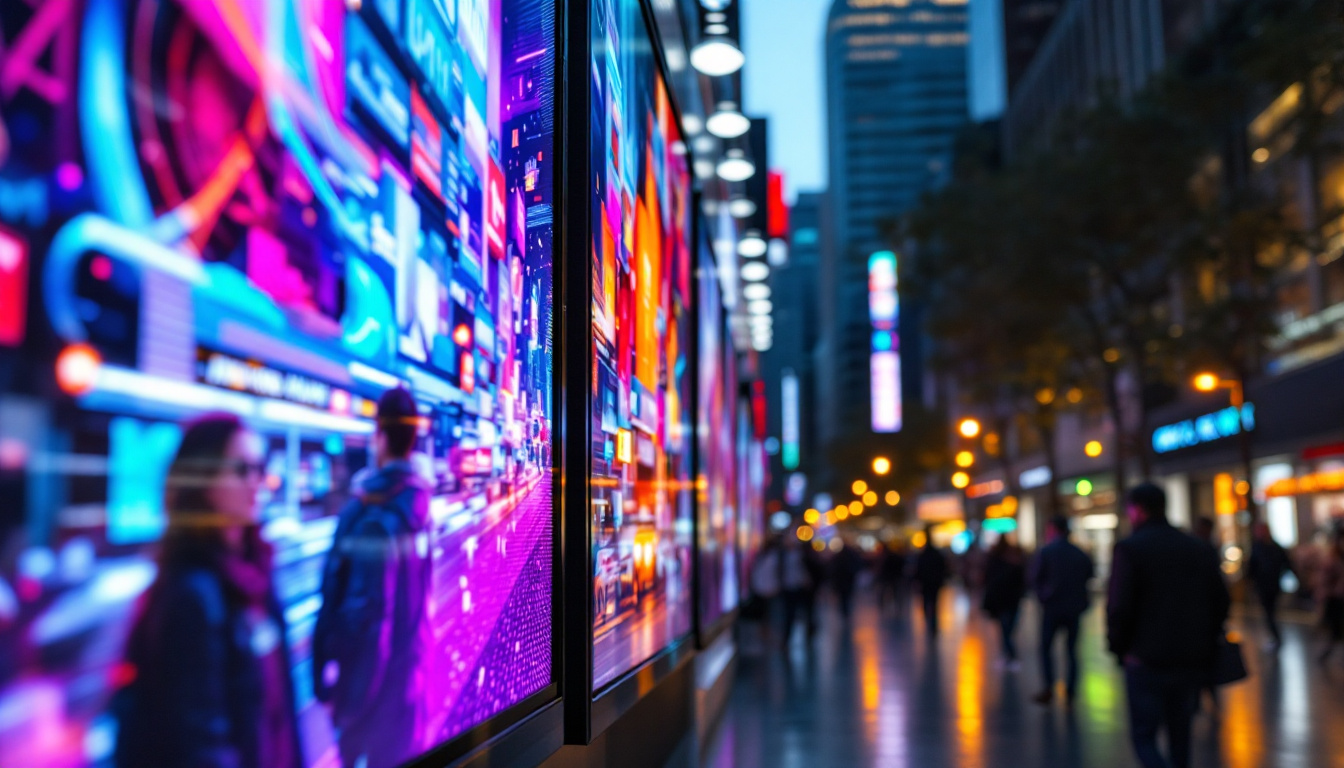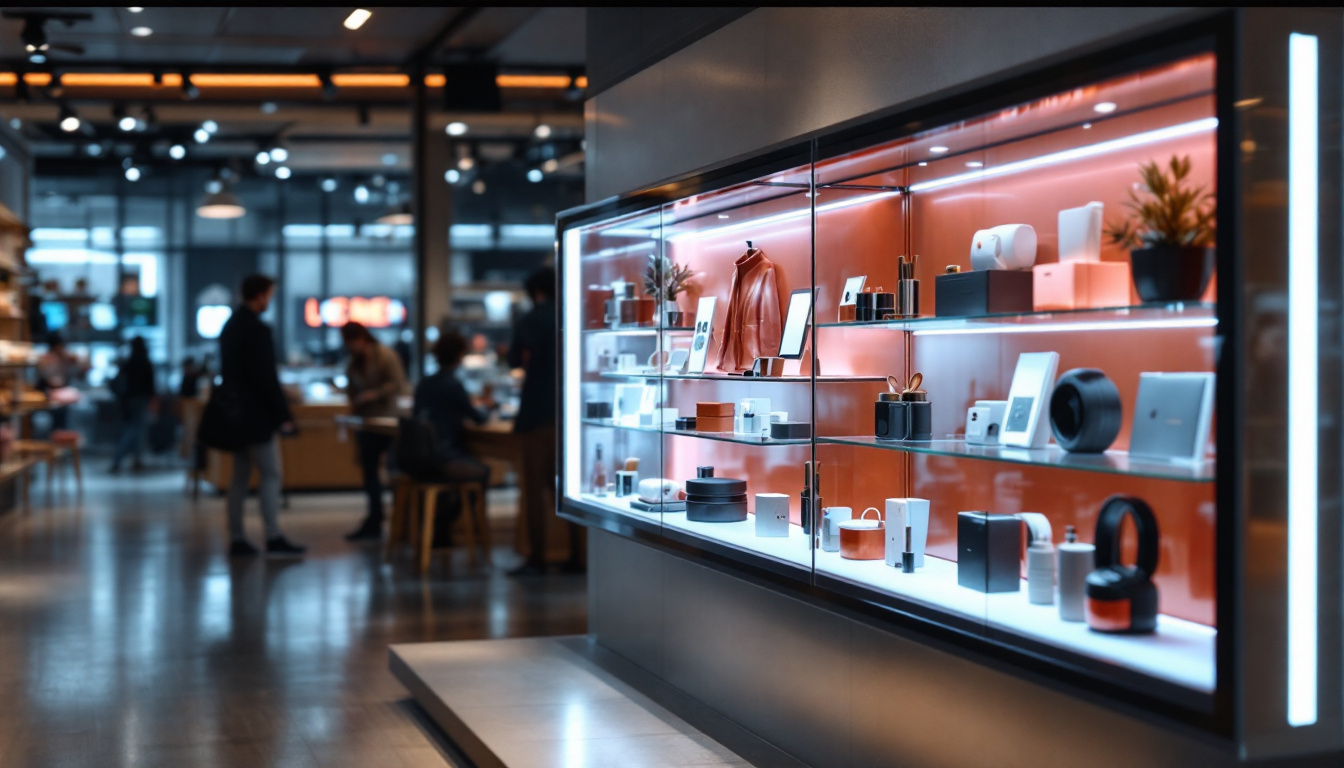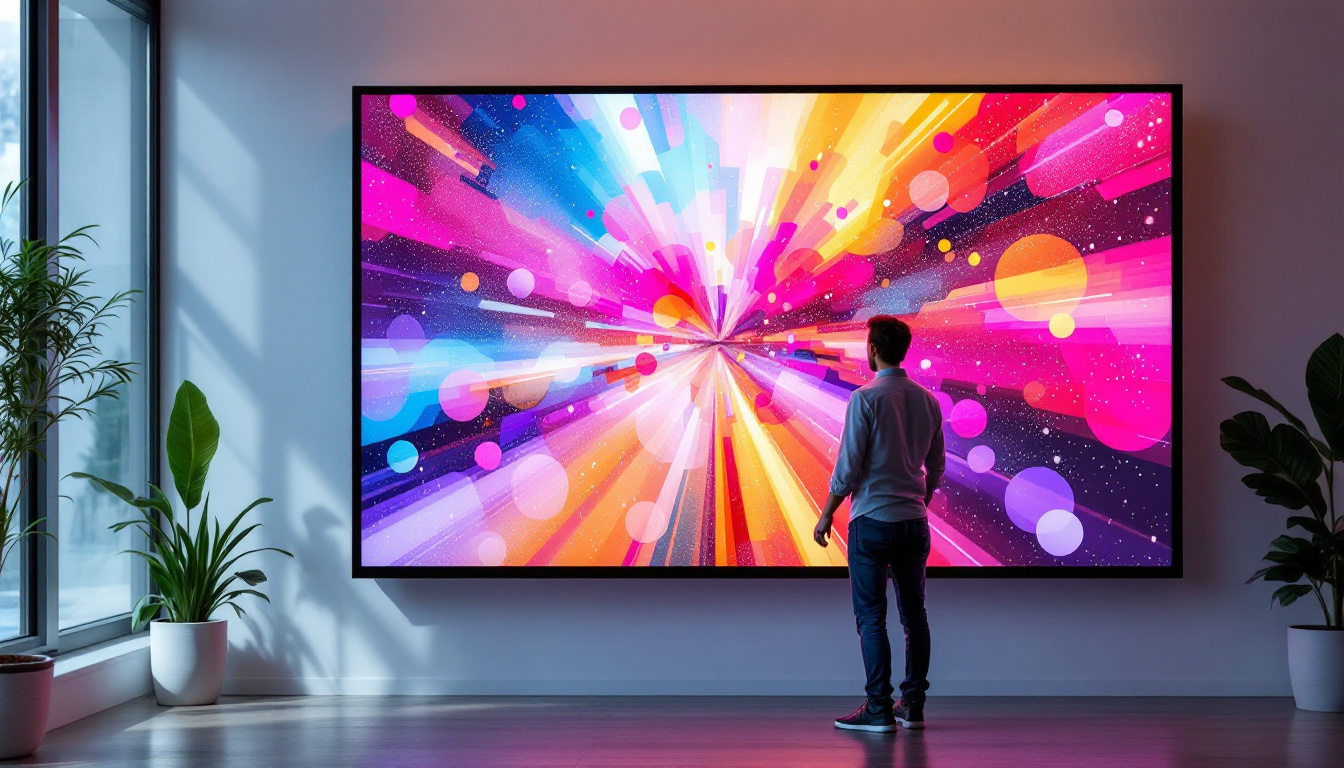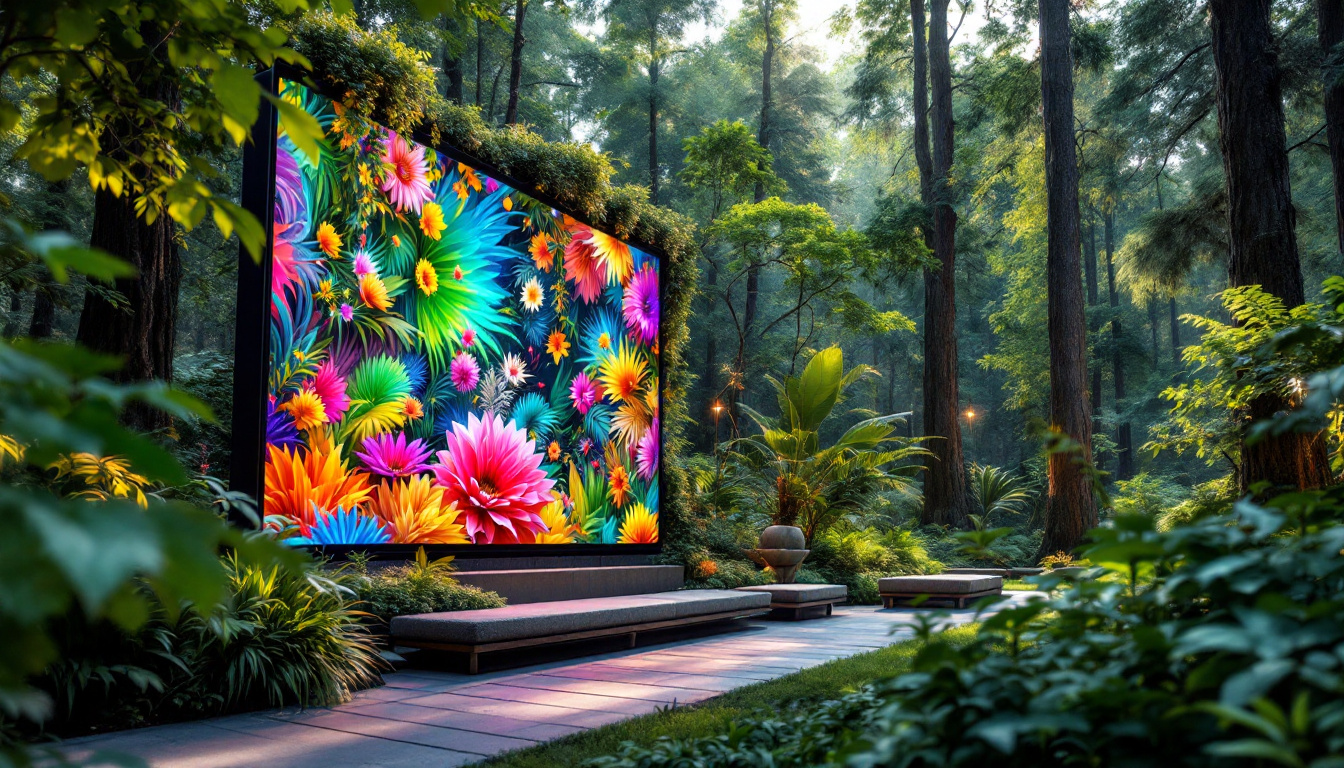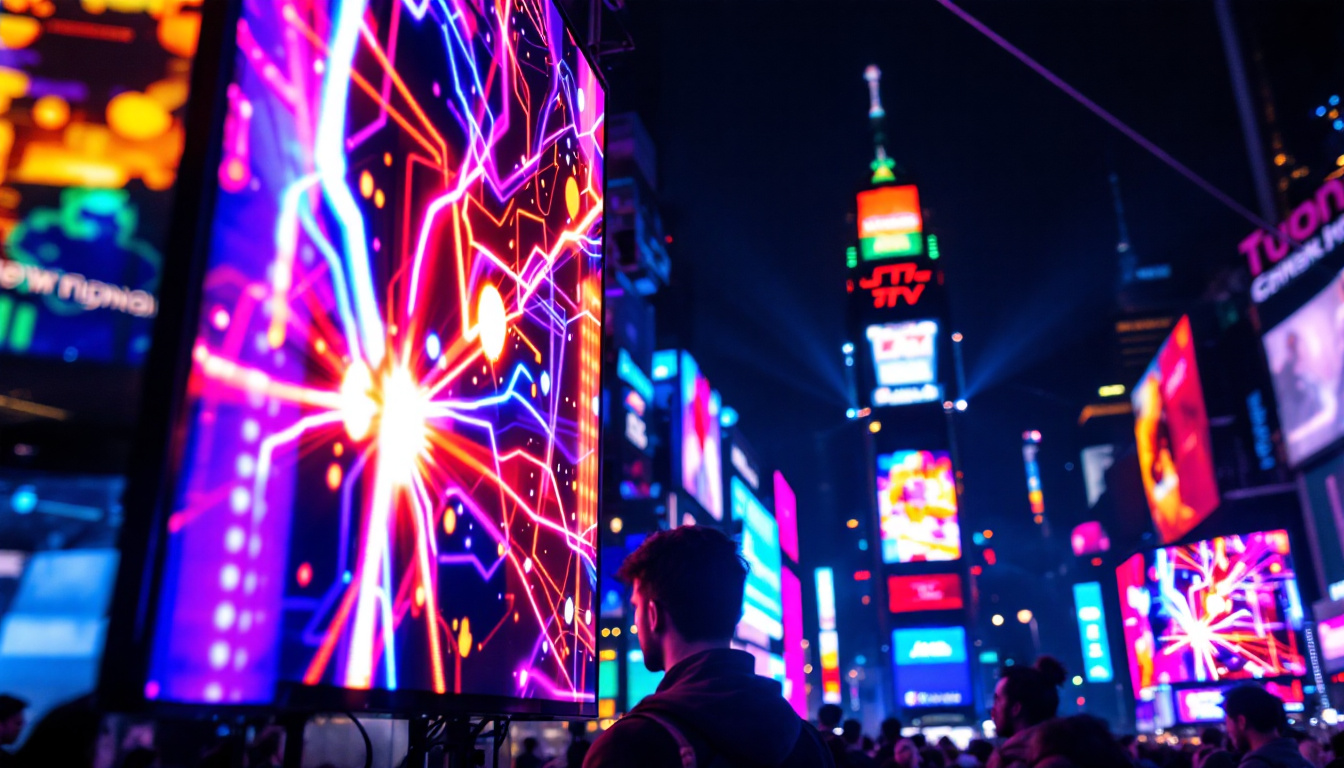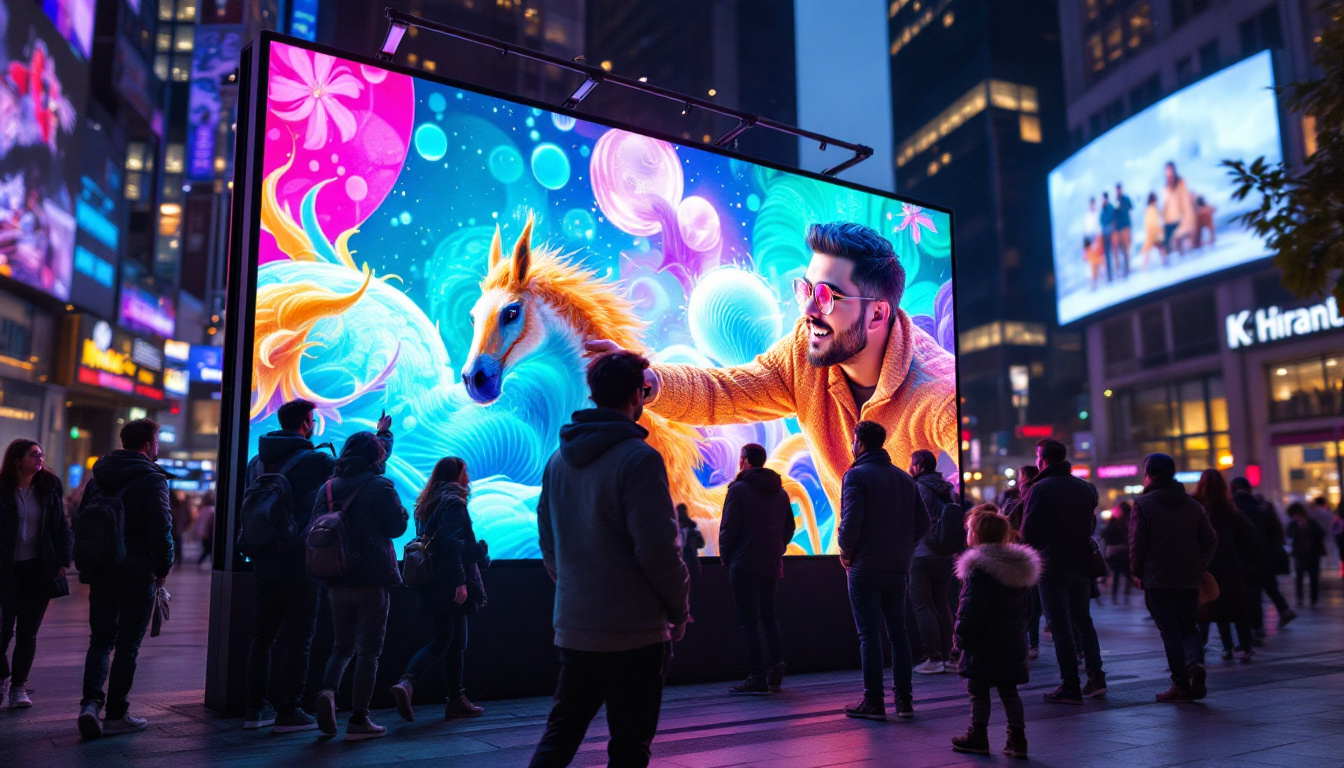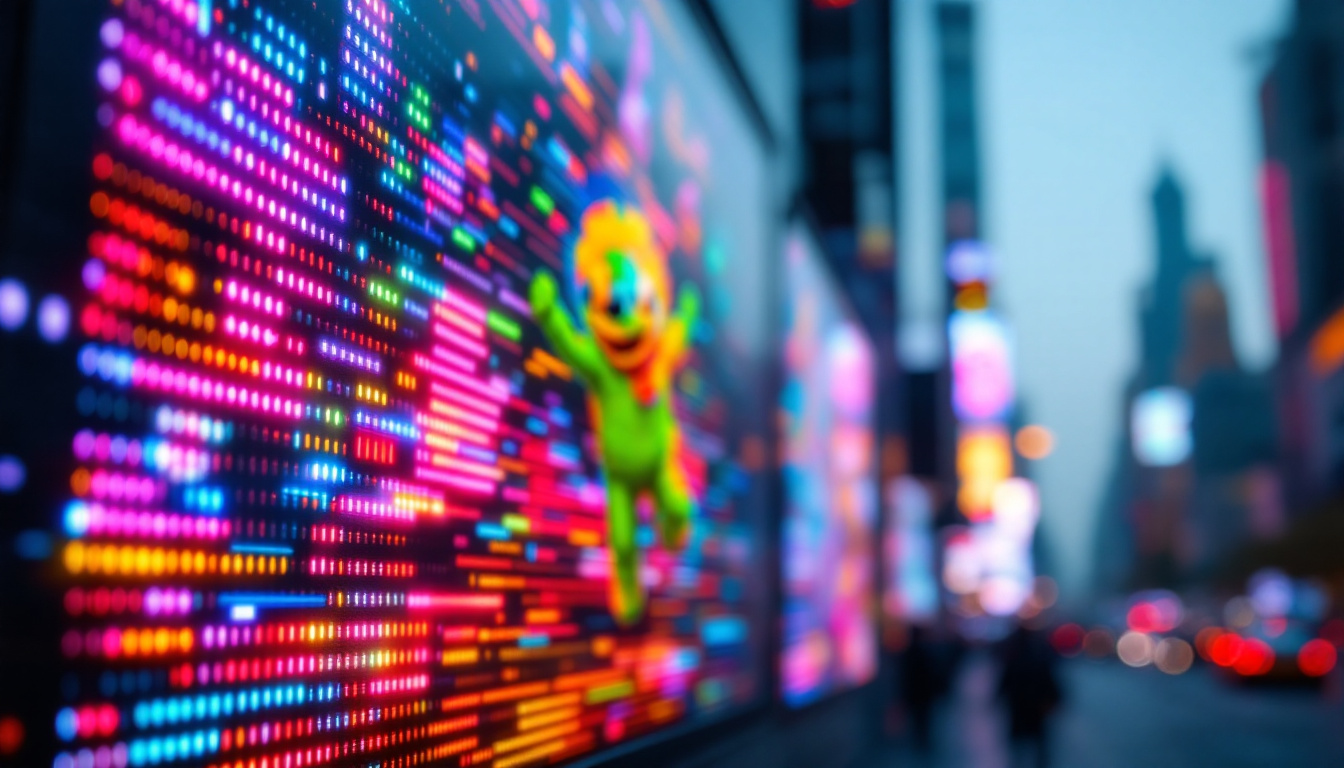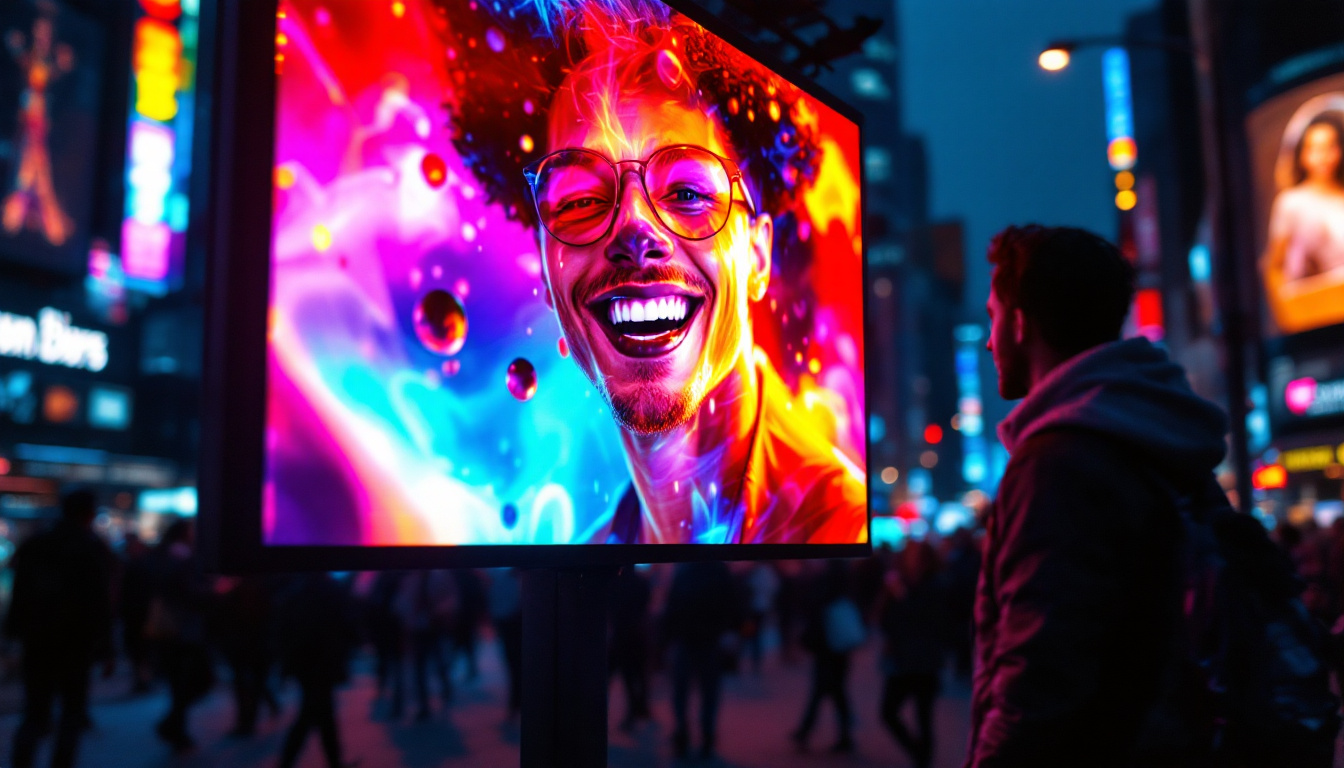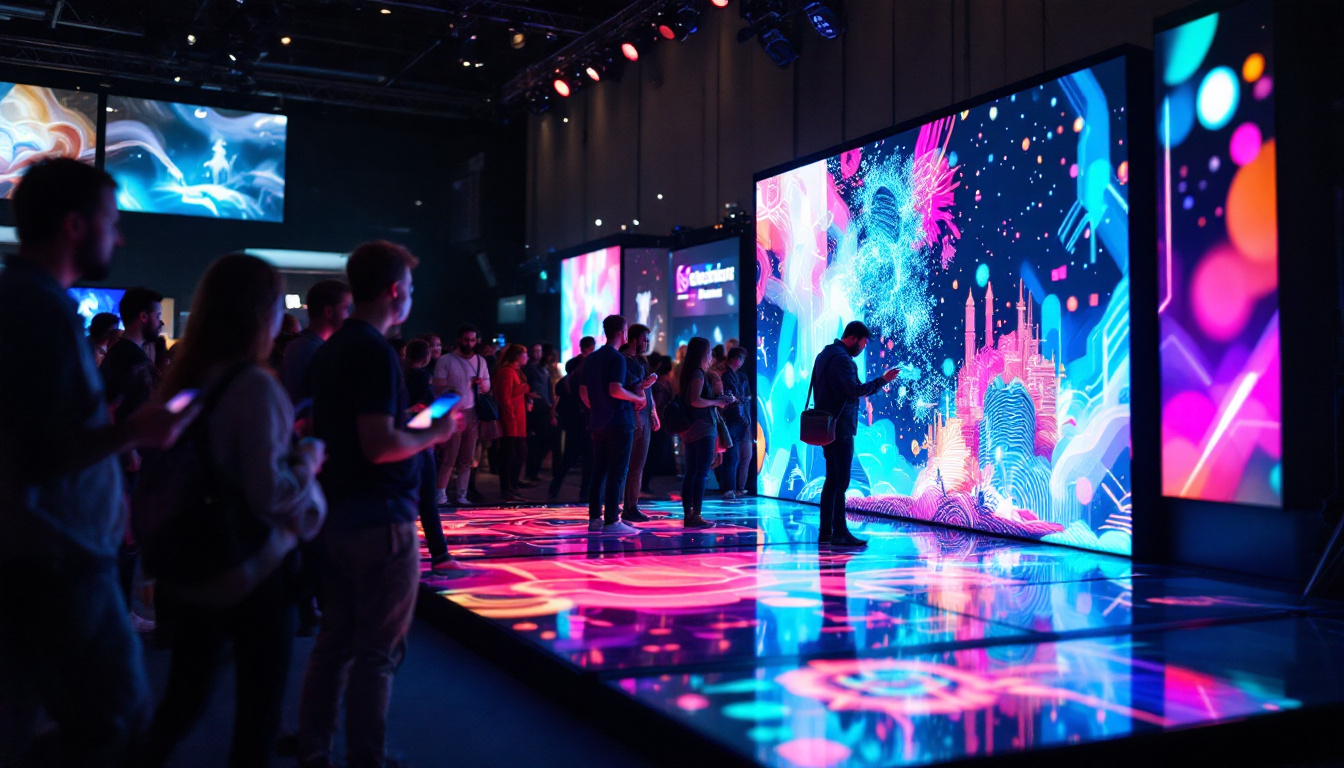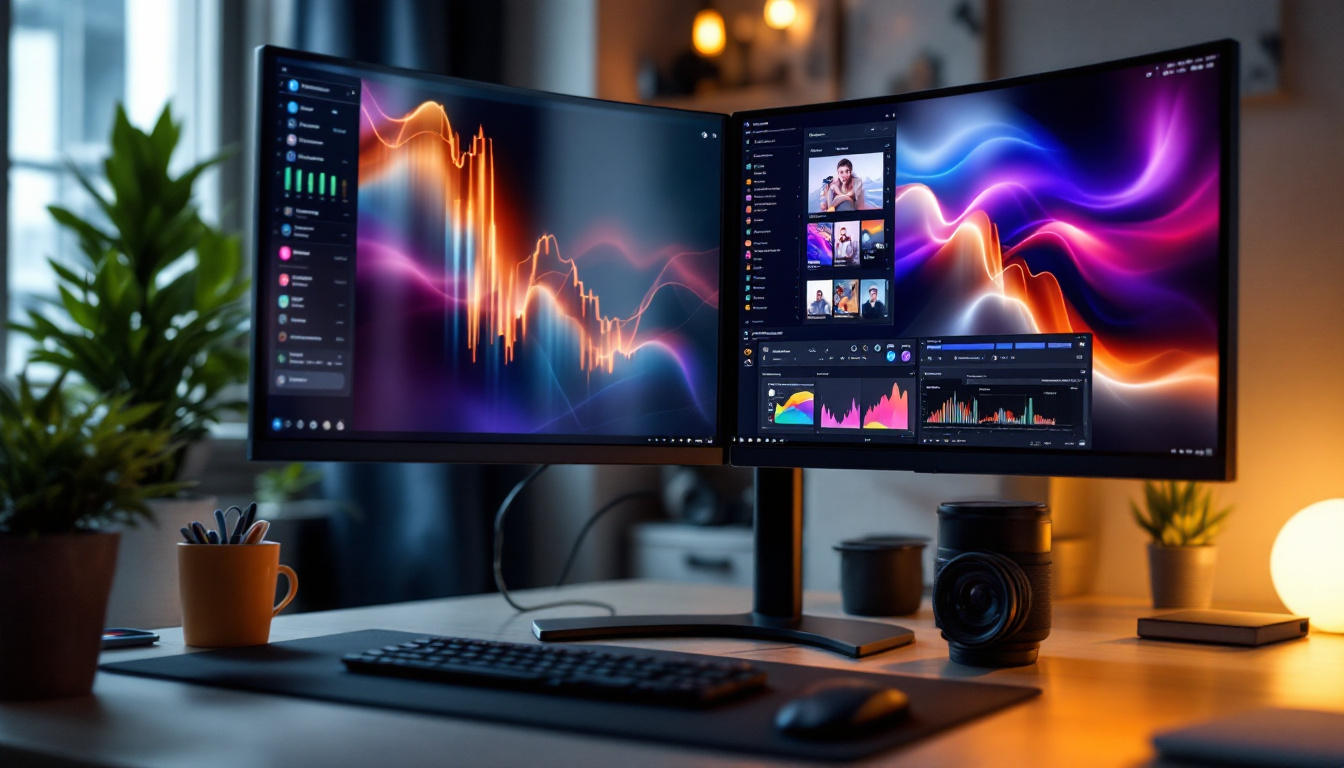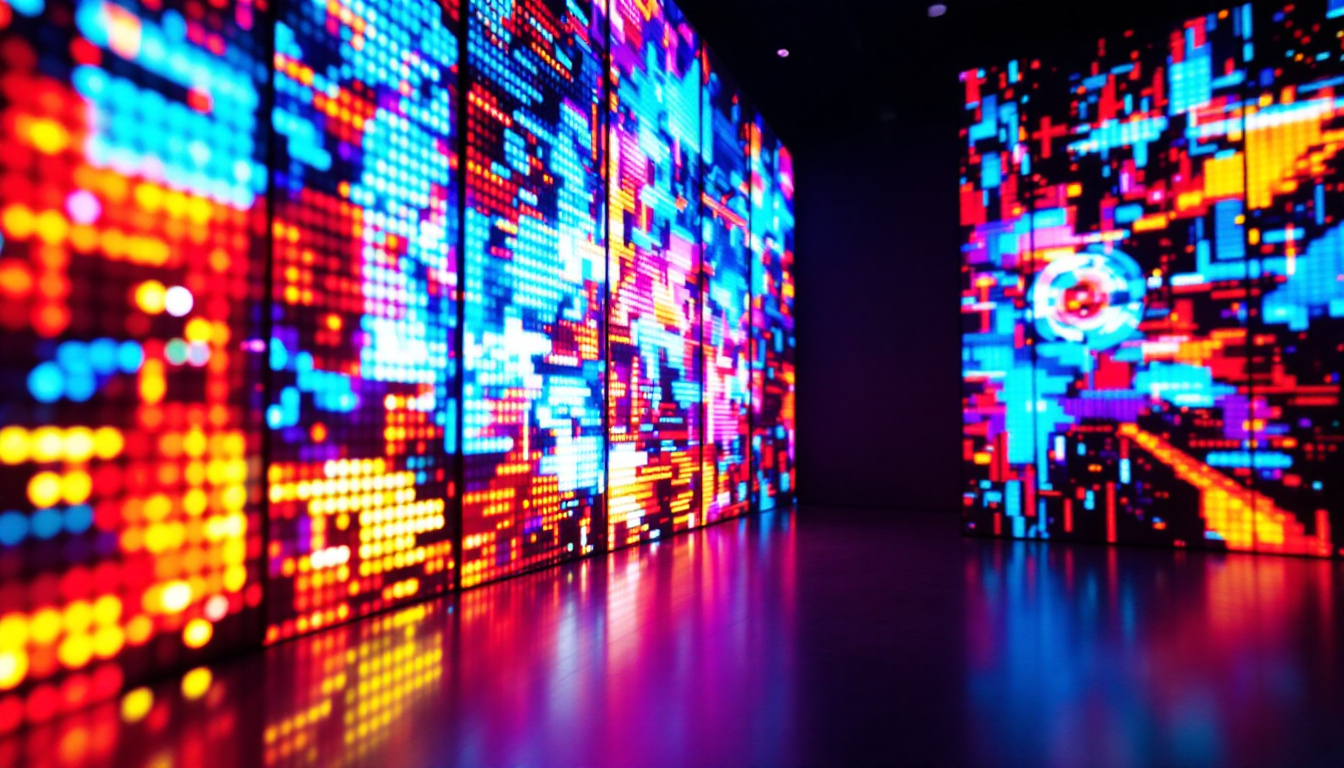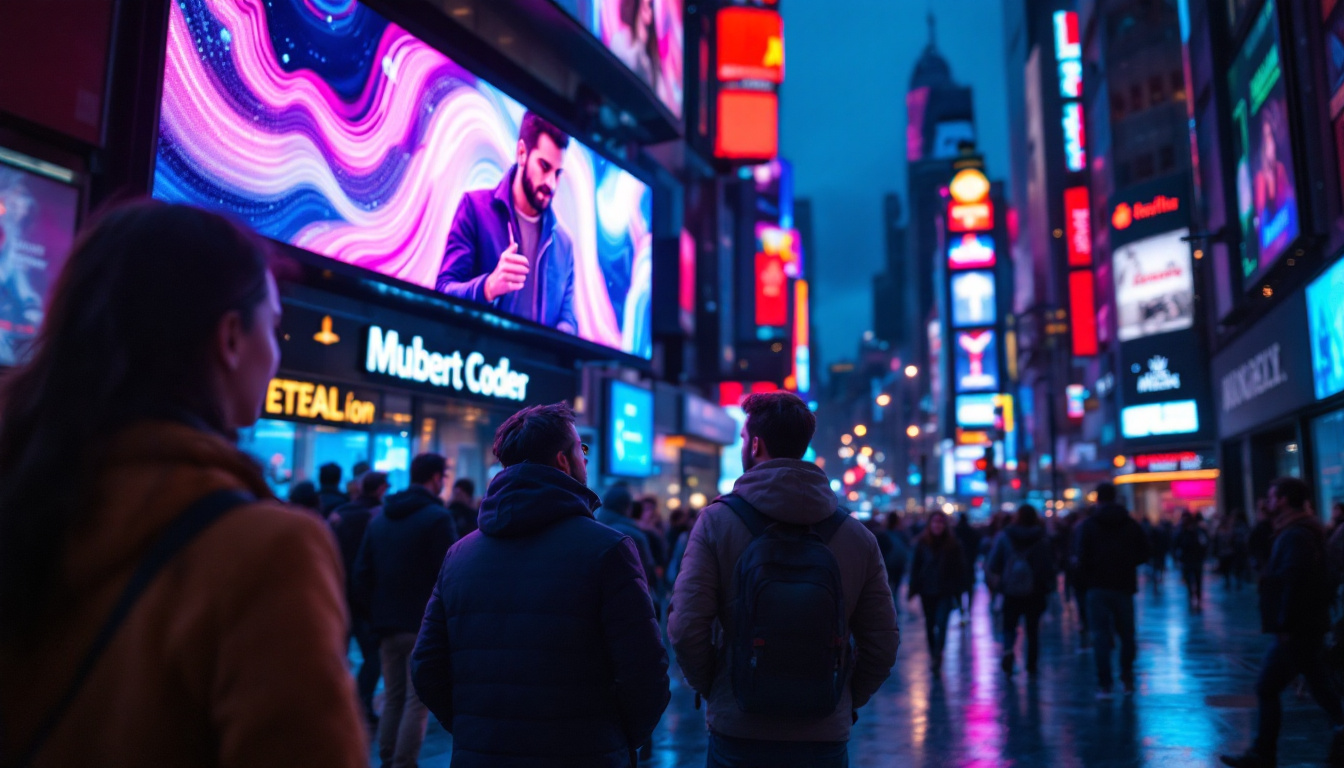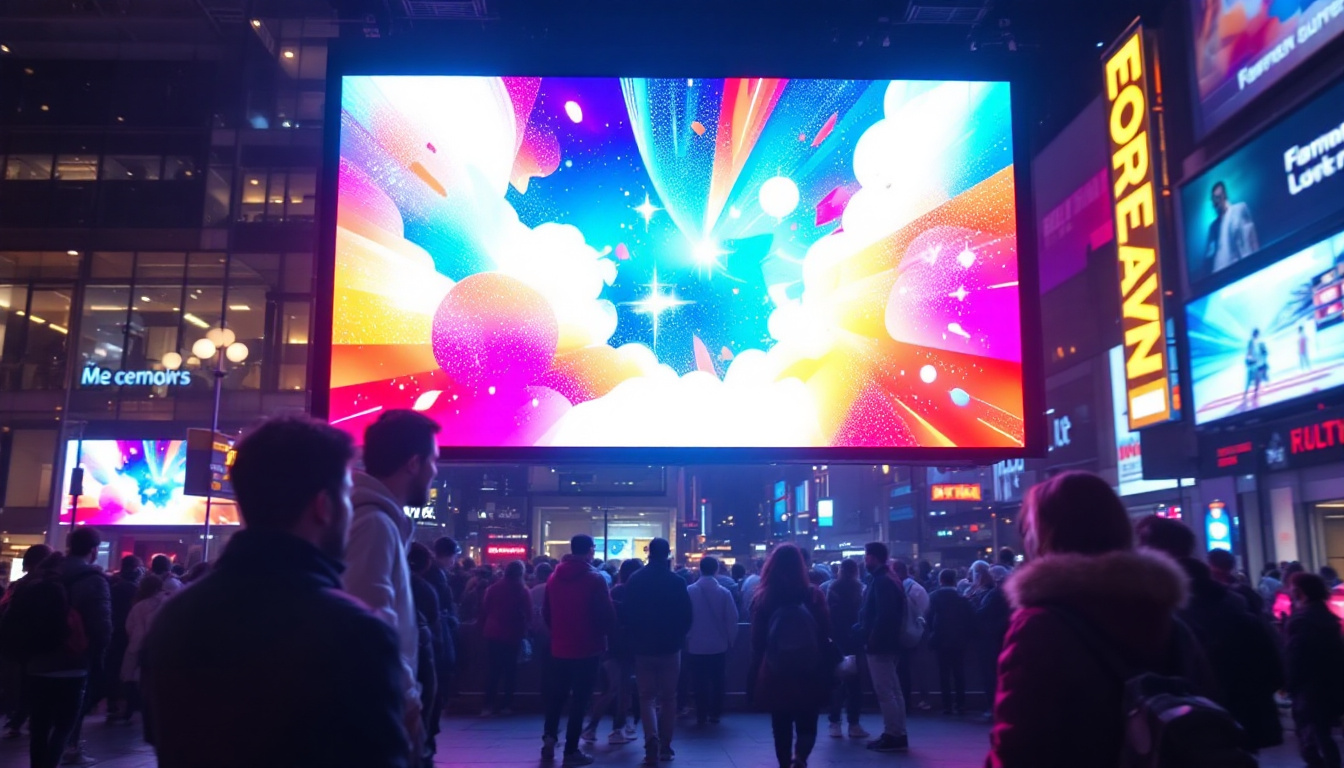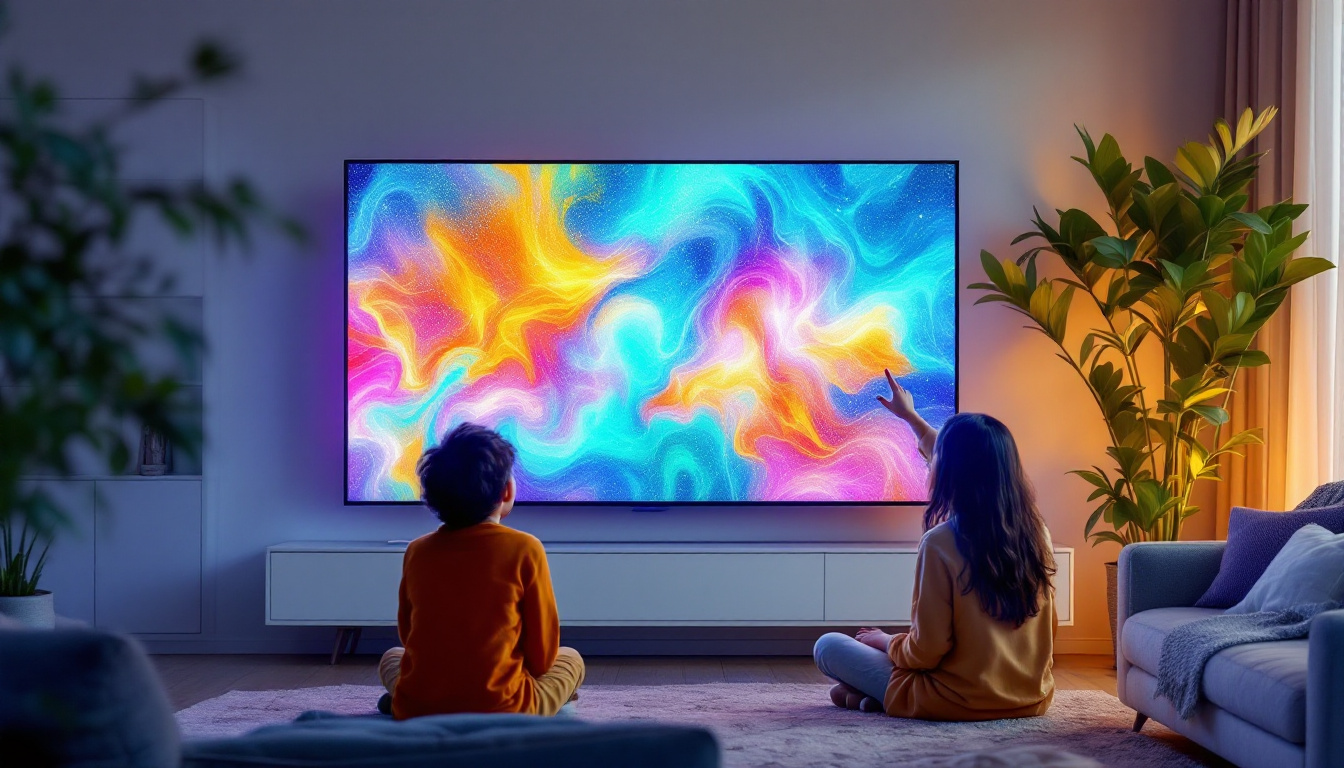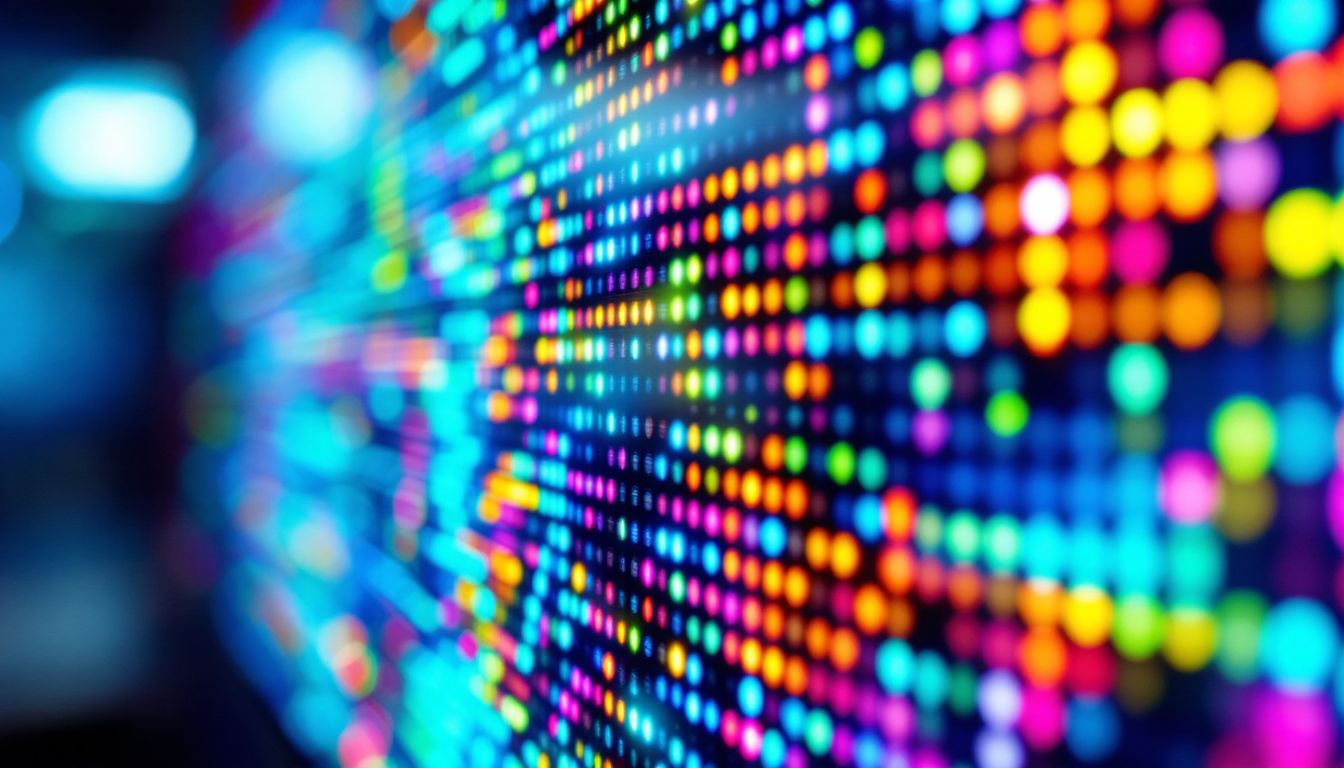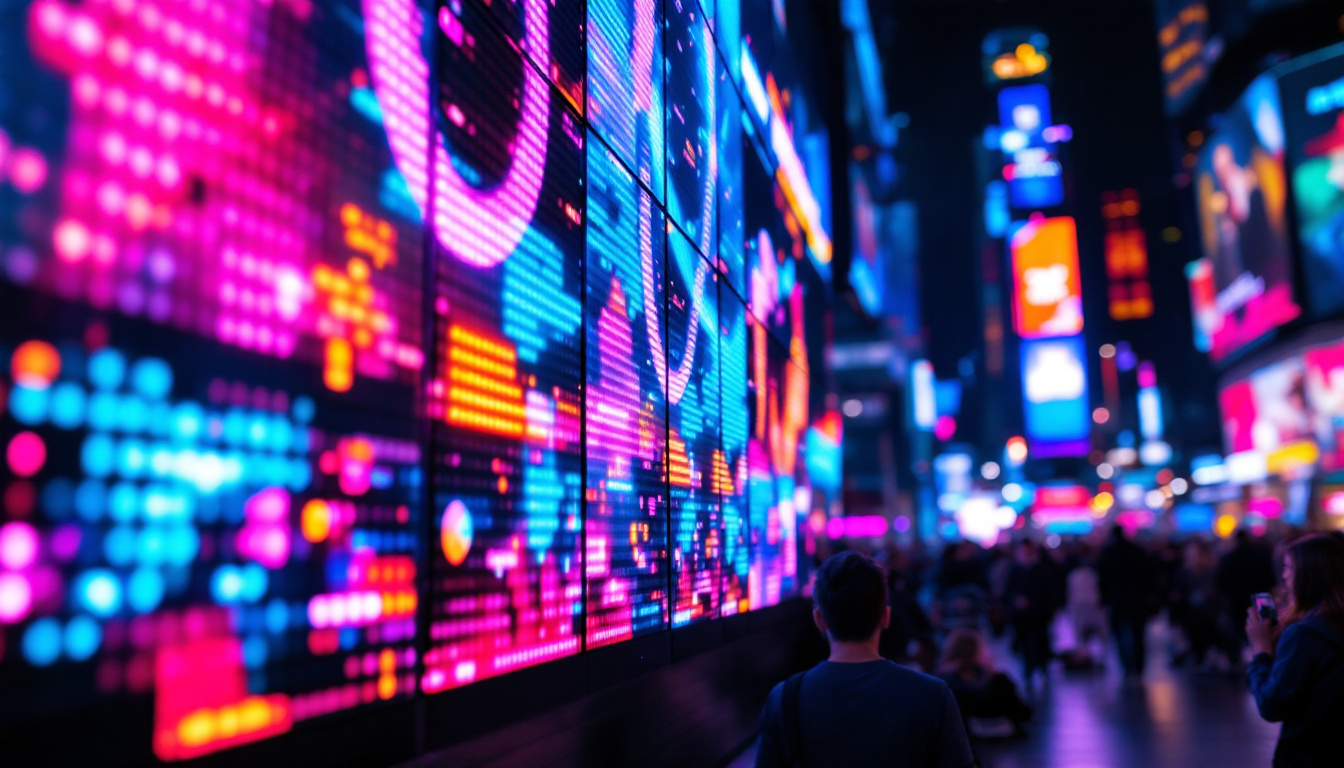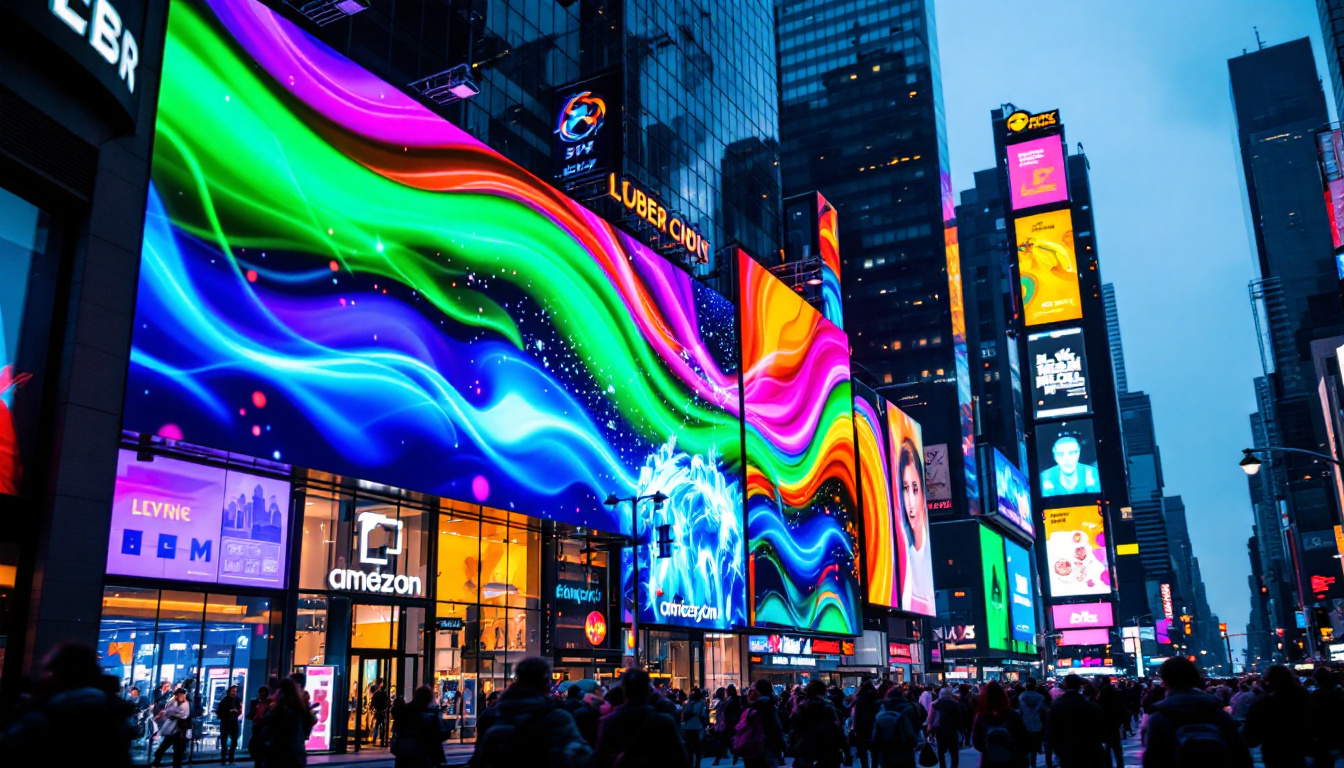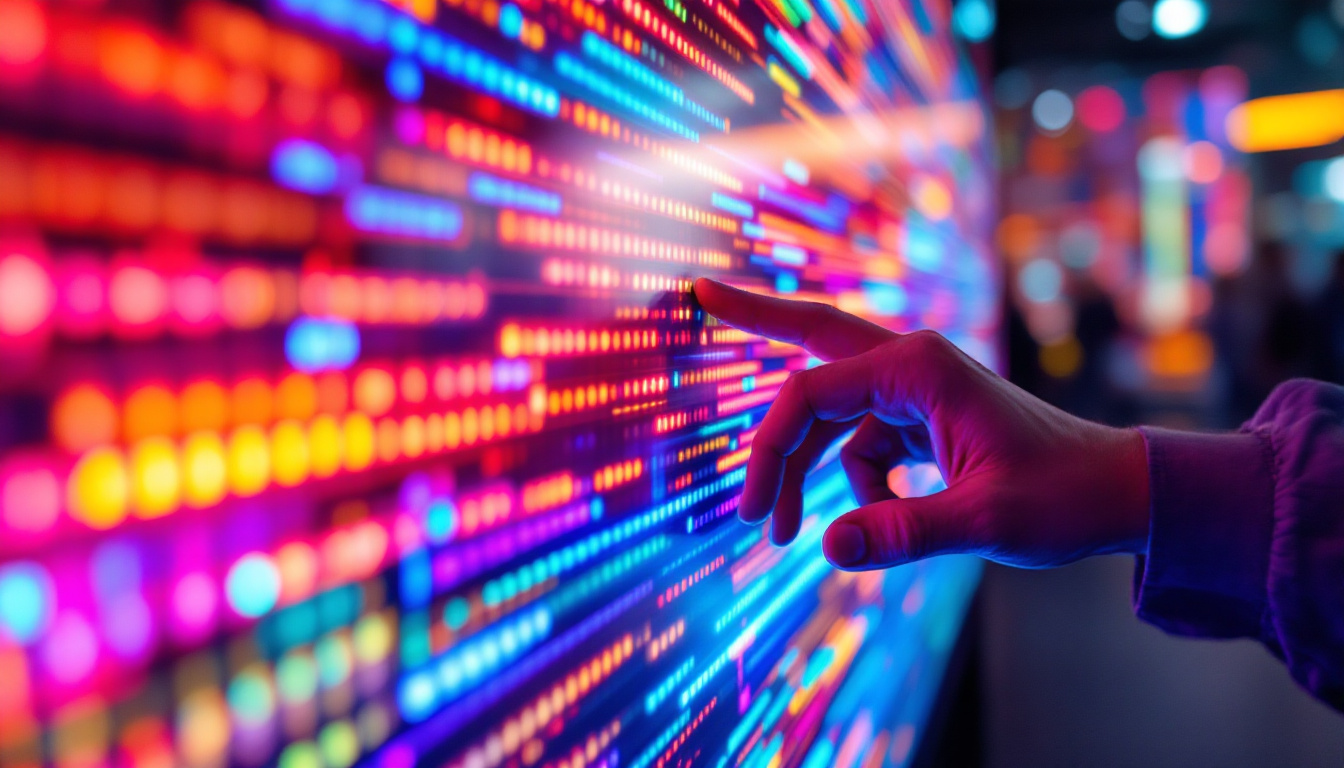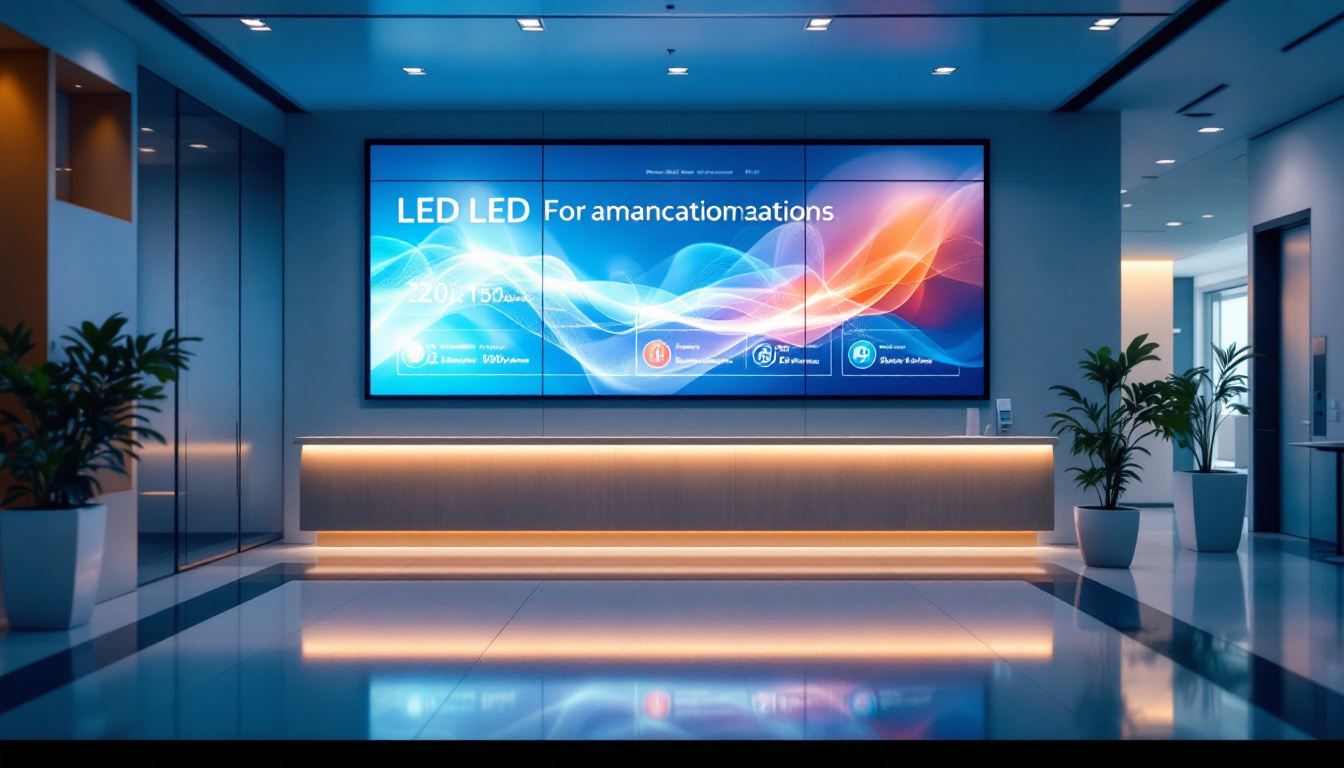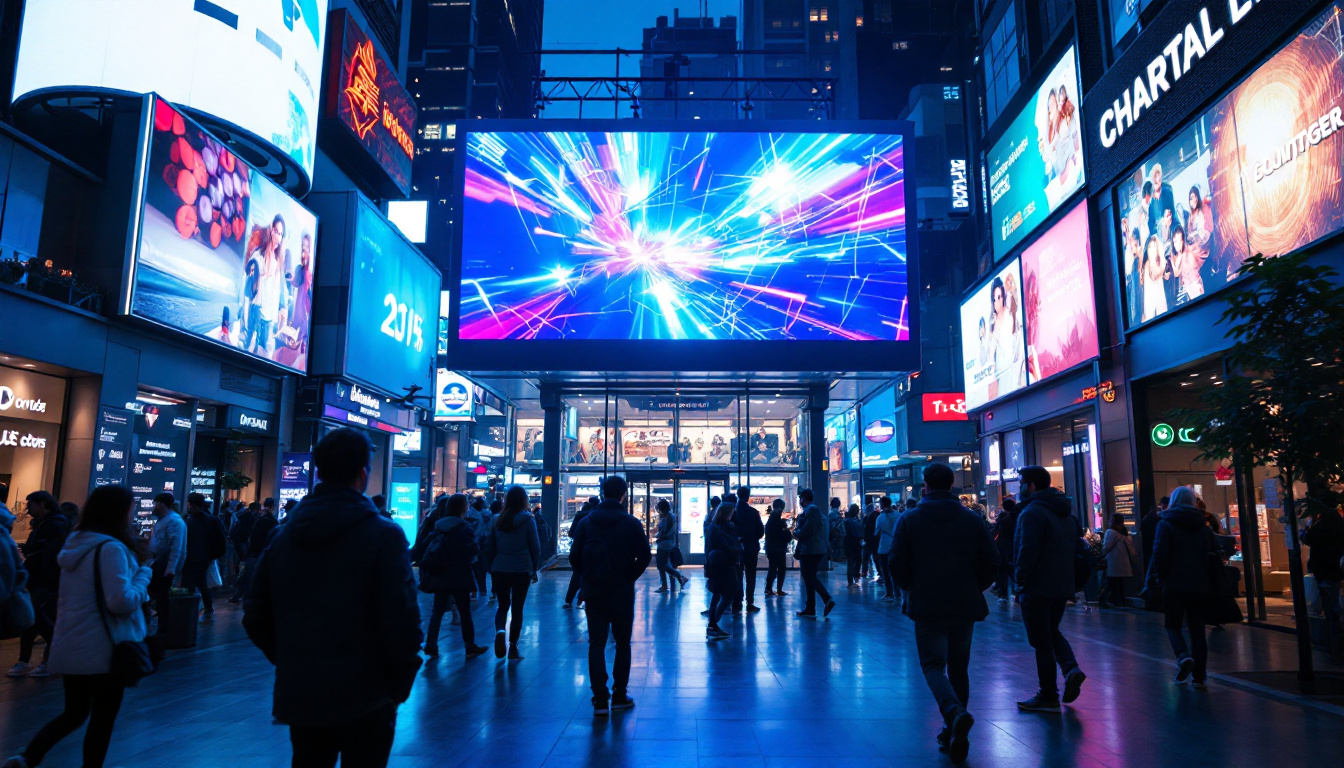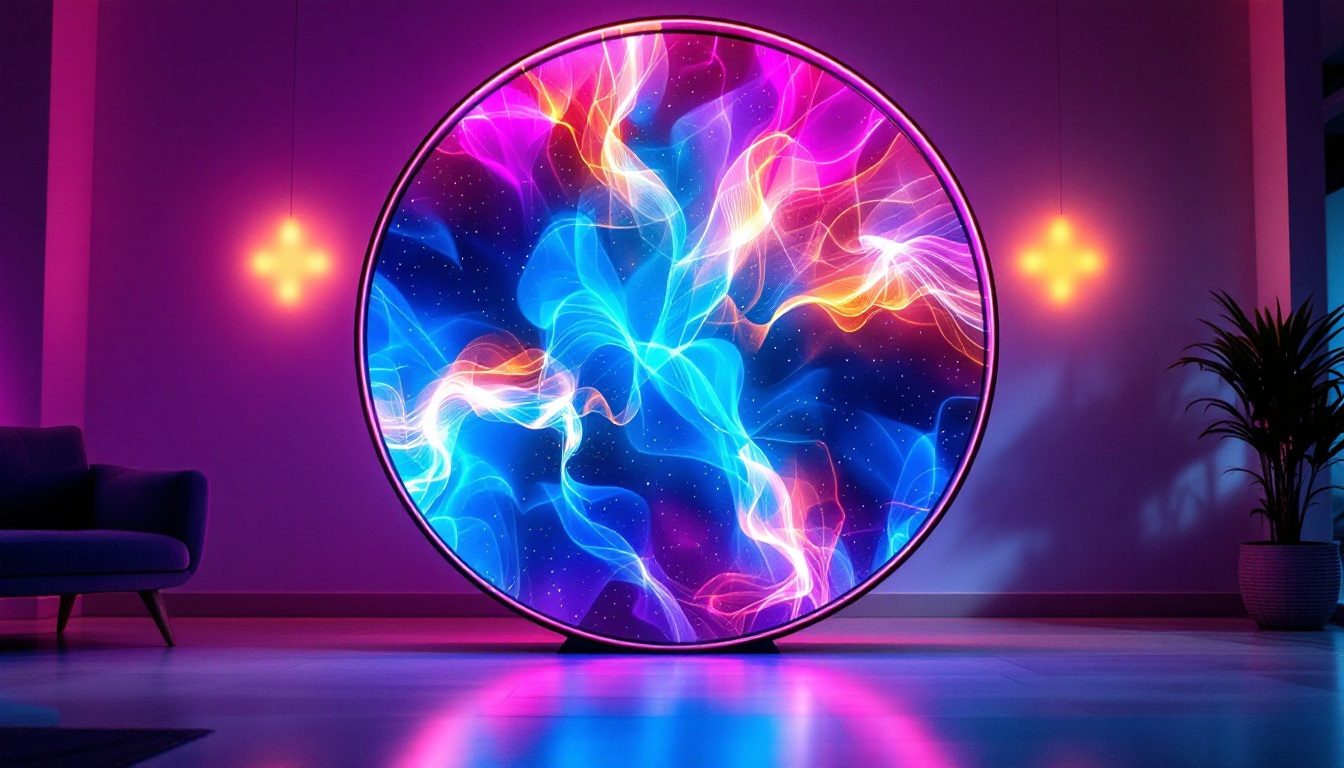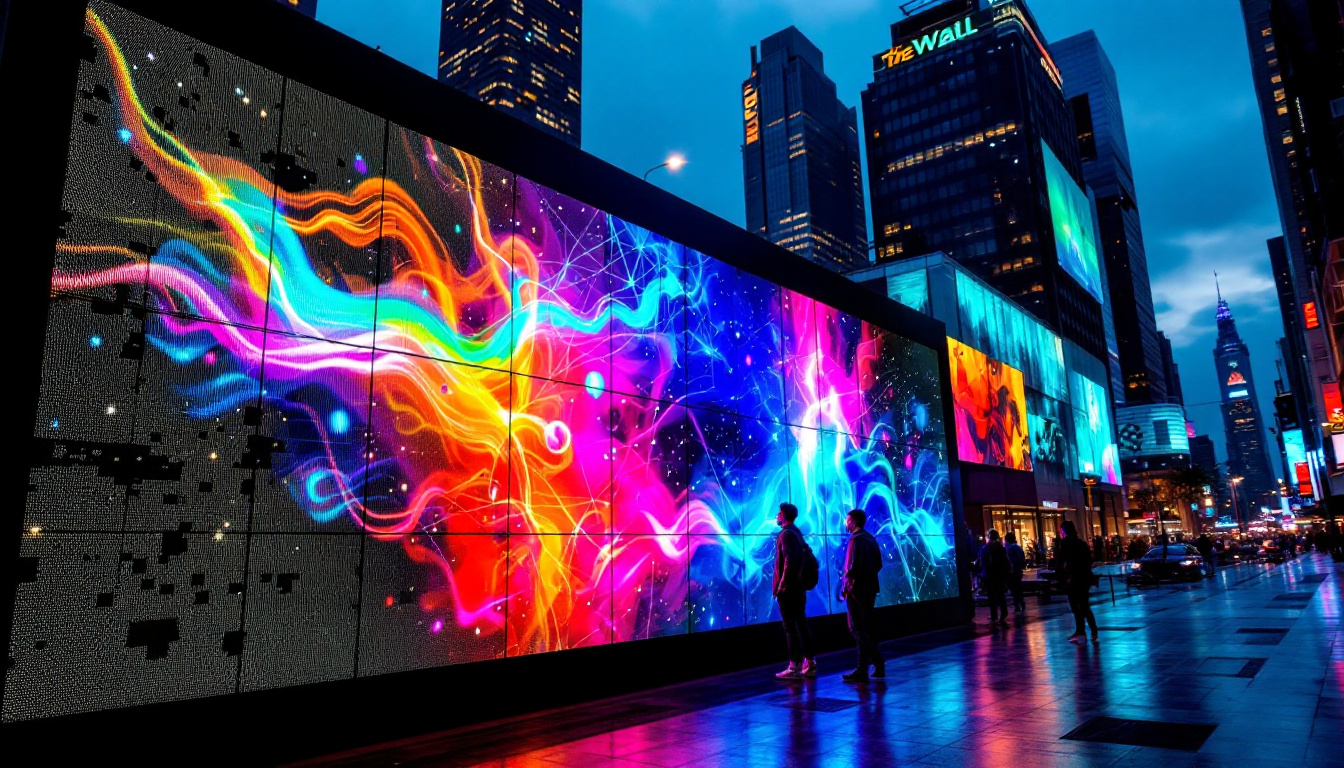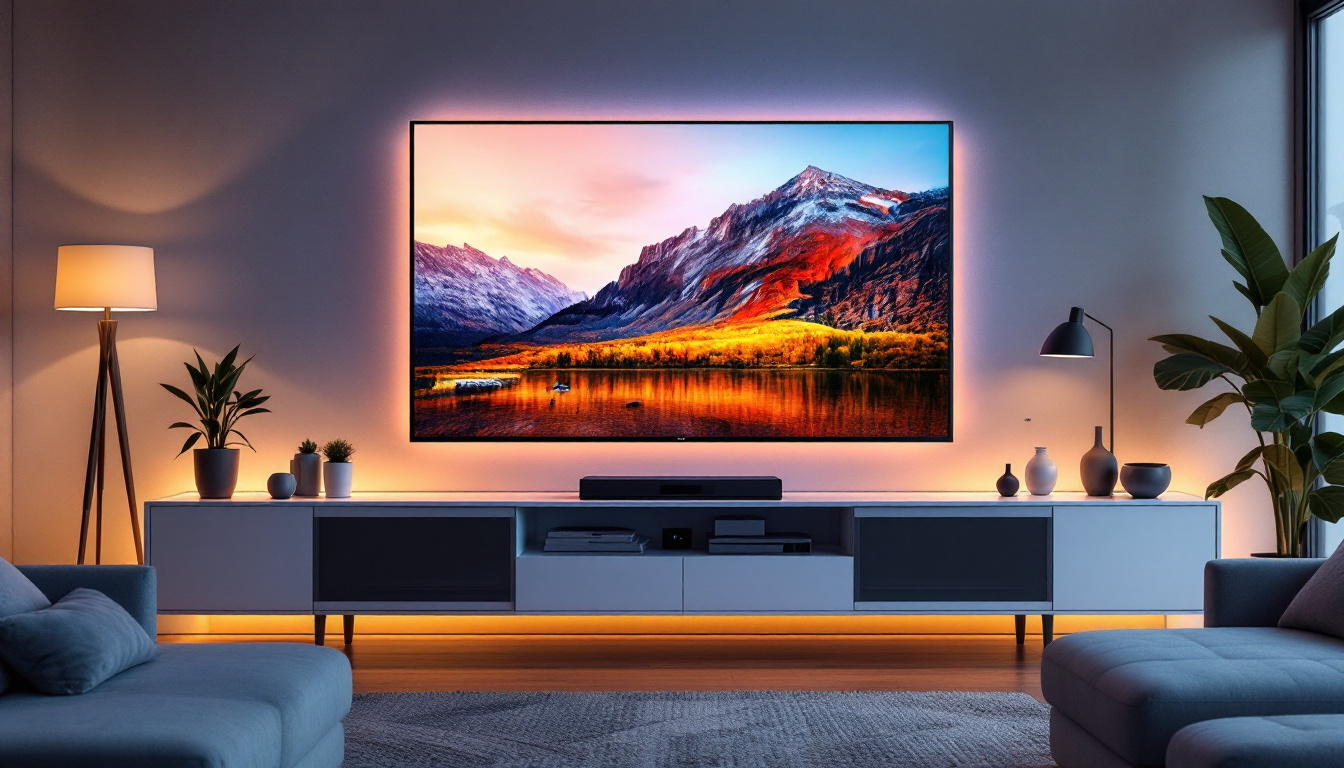In today’s fast-paced world, digital signage has emerged as a powerful communication tool for businesses and organizations. Among the various technologies available, LED displays stand out for their vibrant colors, energy efficiency, and versatility. This article delves into the intricacies of LED displays, exploring their features, benefits, and applications in digital signage.
Understanding LED Technology
Light Emitting Diodes (LEDs) are semiconductor devices that emit light when an electric current passes through them. This technology has revolutionized the way visual information is presented, making it a preferred choice for digital signage. LEDs are not only energy-efficient but also have a long lifespan, often exceeding 50,000 hours, which significantly reduces maintenance costs and environmental impact compared to traditional lighting solutions.
How LED Displays Work
LED displays consist of numerous tiny diodes arranged in a grid. Each diode emits light of a specific color, and by combining these colors—red, green, and blue (RGB)—a full spectrum of colors can be created. This RGB configuration allows for high-resolution images and videos, making LED displays ideal for capturing attention. The technology behind these displays also includes advanced drivers and controllers that manage the brightness and color output, ensuring that the images remain consistent and vibrant across the entire screen.
The brightness of LED displays is another key advantage. They can produce vibrant images even in bright daylight, making them suitable for outdoor installations. Additionally, the modular nature of LED panels allows for flexible configurations, enabling businesses to create displays of various sizes and shapes. This adaptability is particularly beneficial for large-scale events where custom installations are required, allowing for creative designs that can enhance the overall visual experience.
Types of LED Displays
LED displays can be categorized into several types based on their application and technology. The most common types include:
- Indoor LED Displays: These displays are designed for indoor environments, offering high resolution and excellent color accuracy. They are commonly used in retail stores, conference rooms, and event venues. The pixel pitch in indoor displays is typically smaller, allowing for closer viewing distances without losing image quality.
- Outdoor LED Displays: Built to withstand harsh weather conditions, outdoor LED displays are larger and brighter, making them suitable for billboards, stadiums, and public spaces. These displays often feature protective coatings and enhanced cooling systems to ensure longevity and performance in varying climates.
- Transparent LED Displays: These innovative displays allow light to pass through, making them ideal for storefronts and creative advertising solutions. Transparent displays can create a captivating effect, blending digital content with the physical environment, which is particularly appealing in urban settings where space is at a premium.
Another emerging category is Flexible LED Displays, which are made from lightweight materials that can bend and curve. This technology opens up new possibilities for creative installations, such as wrapping displays around columns or creating immersive environments in museums and exhibitions. The versatility of flexible displays allows designers to think outside the box, transforming ordinary spaces into extraordinary visual experiences.
The Benefits of LED Displays in Digital Signage
LED displays offer numerous advantages that make them a popular choice for digital signage. From cost efficiency to environmental benefits, these displays provide a range of features that enhance their appeal.
Energy Efficiency
One of the most significant benefits of LED technology is its energy efficiency. LED displays consume less power compared to traditional display technologies, such as LCD or projection systems. This reduced energy consumption not only lowers operational costs but also contributes to a smaller carbon footprint, making LED displays an environmentally friendly option.
In addition to their lower energy requirements, many LED displays come equipped with smart technology that allows for adaptive brightness control. This feature automatically adjusts the display’s brightness based on ambient light conditions, further optimizing energy use and ensuring that the visuals remain vibrant and clear at all times. This adaptability not only enhances the viewing experience but also extends the lifespan of the display by reducing unnecessary power consumption.
Longevity and Durability
LED displays are designed to last. With a lifespan of over 100,000 hours, they outperform many other display technologies. This longevity means less frequent replacements and lower maintenance costs, making them a cost-effective investment for businesses.
Moreover, LED displays are built to withstand various environmental conditions. Outdoor models are weather-resistant, ensuring they can operate effectively in rain, snow, and extreme temperatures. This durability makes them suitable for a wide range of applications. In fact, many businesses have found that the resilience of LED displays allows them to maintain a consistent message without the interruptions that can arise from equipment failure. This reliability is particularly crucial for high-traffic areas where constant communication is essential.
High-Quality Visuals
The quality of visuals produced by LED displays is unmatched. With high brightness levels, excellent contrast ratios, and wide viewing angles, these displays can deliver stunning images and videos that captivate audiences. Whether used for advertising, information dissemination, or entertainment, the visual impact of LED displays is undeniable.
Additionally, the advancements in LED technology have led to the development of finer pixel pitch options, allowing for even higher resolutions and more detailed imagery. This means that businesses can create immersive experiences that draw in viewers, whether it’s a vibrant advertisement in a shopping mall or an engaging informational display in a corporate lobby. The ability to showcase dynamic content, such as animations and video, further enhances the effectiveness of LED displays, making them a versatile tool for any marketing strategy.
Applications of LED Displays in Digital Signage
LED displays are versatile and can be used in various settings, making them a popular choice for digital signage. Their applications span multiple industries, each benefiting from the unique features of LED technology.
Retail and Advertising
In the retail sector, LED displays are used to attract customers and promote products. Dynamic content, such as videos and animations, can be displayed to capture attention and convey messages effectively. Retailers can also use LED signage to showcase promotions, sales, and new arrivals, enhancing customer engagement.
Advertising agencies leverage LED displays for outdoor billboards and digital signage in high-traffic areas. The ability to change content in real-time allows advertisers to target specific audiences and adapt their messaging based on current trends or events.
Transportation and Wayfinding
LED displays play a crucial role in transportation hubs, such as airports, train stations, and bus terminals. They provide real-time information on schedules, arrivals, and departures, ensuring passengers are well-informed. Additionally, LED displays can be used for wayfinding, guiding individuals through complex environments with clear visual cues.
Corporate and Event Signage
In corporate settings, LED displays are utilized for presentations, meetings, and conferences. Their high-resolution capabilities allow for clear visuals, making it easier to convey complex information. Event organizers also use LED displays to enhance the attendee experience, showcasing schedules, speaker information, and live feeds.
Challenges and Considerations
While LED displays offer numerous benefits, there are challenges and considerations that businesses should keep in mind when implementing digital signage solutions.
Initial Investment Costs
The initial investment for LED displays can be significant, especially for high-quality models. Businesses must weigh the upfront costs against the long-term benefits, such as reduced energy consumption and maintenance expenses. Careful planning and budgeting are essential to ensure a successful implementation.
Content Management
Effective digital signage relies on engaging content. Businesses must invest in content creation and management systems to ensure that their displays remain relevant and captivating. Regular updates and maintenance of content are necessary to keep audiences engaged and informed.
Technical Expertise
Implementing and maintaining LED displays may require technical expertise. Organizations may need to hire or train staff to manage the technology effectively. Additionally, ensuring compatibility with existing systems and networks can pose challenges that need to be addressed during the planning phase.
Future Trends in LED Digital Signage
The digital signage landscape is continually evolving, and LED technology is at the forefront of these changes. Several trends are shaping the future of LED displays, offering exciting possibilities for businesses and consumers alike.
Integration with IoT
The Internet of Things (IoT) is transforming various industries, and digital signage is no exception. Future LED displays are expected to integrate seamlessly with IoT devices, allowing for real-time data exchange and dynamic content updates. This integration will enable businesses to deliver personalized messages based on audience behavior and preferences.
Advancements in Display Technology
As technology advances, LED displays are becoming even more sophisticated. Innovations such as microLED and OLED technologies promise to deliver higher resolutions, improved color accuracy, and thinner designs. These advancements will open up new possibilities for creative applications in digital signage.
Focus on Interactivity
Interactive LED displays are gaining traction, allowing users to engage with content in real-time. Touchscreen capabilities and gesture recognition technologies are being integrated into LED signage, enhancing user experiences and encouraging audience participation. This shift towards interactivity will redefine how businesses communicate with their customers.
Conclusion
LED displays have revolutionized the digital signage landscape, offering vibrant visuals, energy efficiency, and versatility. Their applications span various industries, from retail to transportation, making them an essential tool for effective communication. While challenges exist, the benefits of LED technology far outweigh the drawbacks, making it a worthwhile investment for businesses looking to enhance their visibility and engagement.
As technology continues to evolve, the future of LED displays in digital signage looks promising. With advancements in integration, display technology, and interactivity, businesses can expect even more innovative solutions that will captivate audiences and drive success.
Explore Cutting-Edge LED Display Solutions with LumenMatrix
Ready to elevate your digital signage and captivate your audience like never before? Discover LumenMatrix’s innovative LED display technology, designed to bring your brand to life with unparalleled vibrancy and clarity. From Indoor and Outdoor LED Walls to specialized solutions like Vehicle, Sports, and Floor LED Displays, LumenMatrix offers a comprehensive range of products tailored to your unique needs. Embrace the future of visual communication with our Custom, All-in-One, and Transparent LED Displays. Don’t miss out on the opportunity to transform your messaging and engage with your audience on a whole new level. Check out LumenMatrix LED Display Solutions today and witness the power of advanced LED technology.

